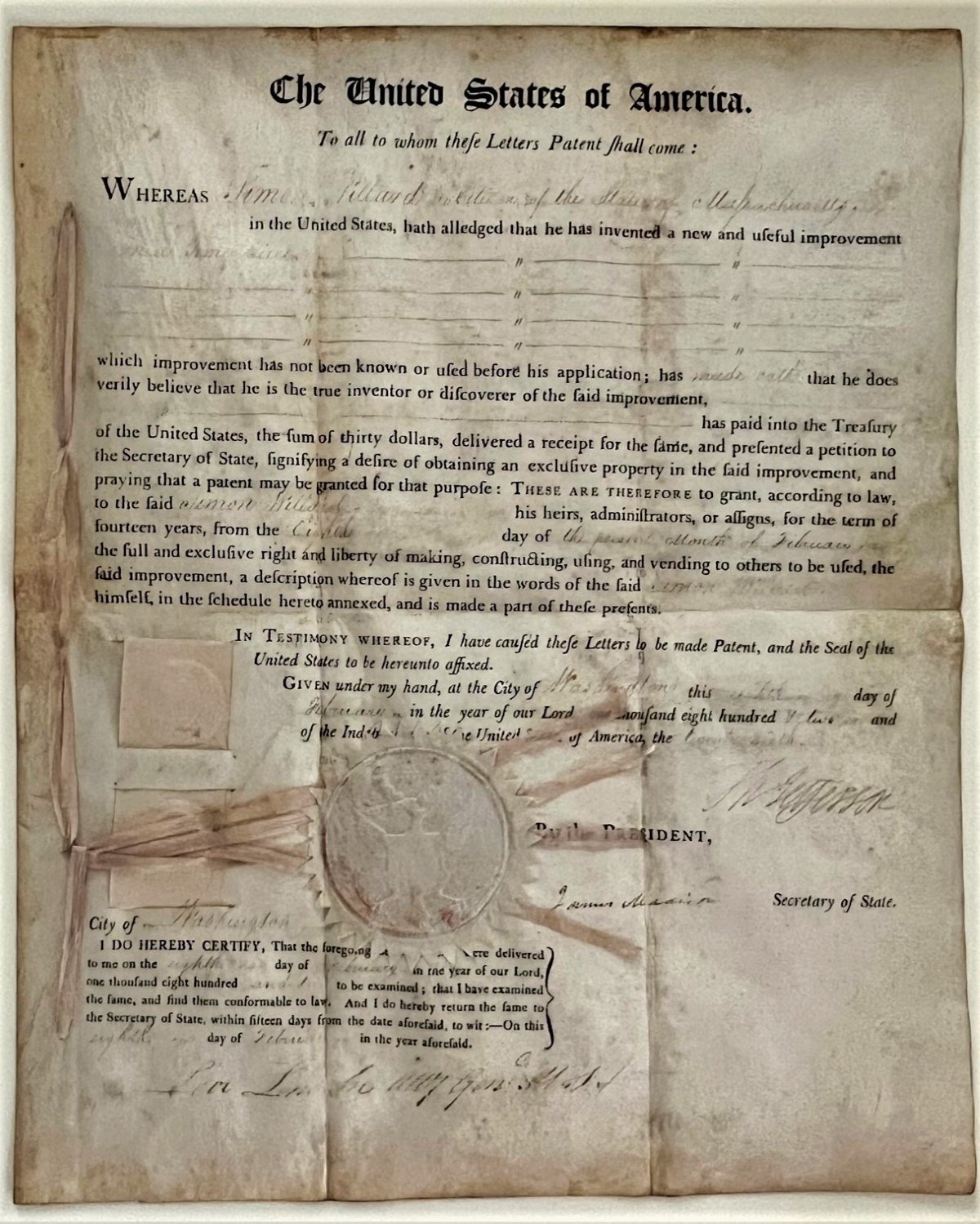Patent to Simon Willard, 1802, Washington, DC.
96.37 Willard House and Clock Museum, gift of Mary Cowell
Original patent and description issued to Simon Willard, February 8th, 1802, for improvement "in a time piece", signed by Thomas Jefferson as President; James Madison as Secretary of State; and Levi Lincoln as Attorney General; one page folio vellum with four dollar registry tab, intact seal; with collateral manuscript sheet from Simon Willard's detailed notes from the application for patent.
Simon Willard paid to Samuel A. Otis to have this patent registered in Washington in 1802.
The Schedule referred to in these Letters Patent, and making part of the same containing a description in the words of the said Simon Willard himself of his improvement, In a Time piece.
Be it known, that I, Simon Willard of Roxbury, in the County of Norfolk and Commonwealth of Massachusetts, have invented, constructed and applied to use a new and useful regulator, or timepiece. The description of its machinery and the explanation of its principles are as follows, viz: - The height of it is two feet, and the diameter of the face about seven inches but may be increased or diminished to any size. The power of motion is a weight instead of a spring, which is the case in all regulators, and time pieces smaller than the clock. The weight falls only fifteen inches in eight days, during which time the regulator goes without winding up, whereas, the weight of the eight day clock falls not less than six feet in the same time. By the construction of the time piece or regulator the pendulum is brought forward in front of the weights, by which means it may be made longer and will consequently vibrate more accurately than the common method in which the pendulum was placed behind the weights. The pendulum is suspended on pivots by which it is prevented from the least warble which is one great cause of inacuracy in the common regulator, considered hitherto irremediable. At the bottom of the pendulum there is a plate graduated to the arch described which serves to measure the oscillations of the pendulum and shews to what distance it ought to vibrate, from the center of gravity to keep true time and likewise shews when it is out of order or wants oiling or cleaning : also the variations of the vibratory motion of the pendulum from the influence of heat and cold, may be accurately ascertained and in a great measure remidied. The cace of the Regulator is thick glass, painted, varnished and gilt in a manner which can never fade, and is more durable as well as beautiful and cheaper than the common china enamelled or any other kind of caces. The door of the regulator is set with glass painted and gilded with an oval space left, through which the motion of the pendulum is seen which has a pleasing effect. The whole of this regulator can be constructed and made with much less labor and expense than any other kind of regulator yet constructed. In testimony that the afore-mentioned is a true description thereof I, the said Simon Willard have hereunto set my Hand and Seal this twenty-fifth day of November in the year of our Lord, one thousand eight hundred and one.
Simon Willard.
Signed and Sealed in presence of us,
Luther Richardson.
Thos. T. Robinson.
Ht. 14.5” 96.37
